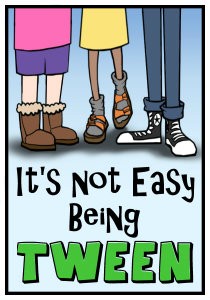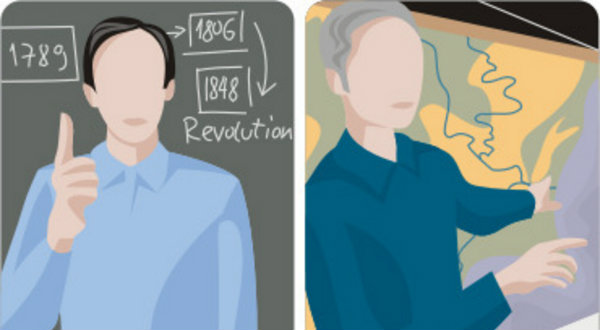Some Inclusion Tips for the General Ed Teacher
A MiddleWeb Blog

By the time I earned my Master’s in 1999, teachers were used to having students with a wide range of abilities in their classes and we were moving closer to the equitable classrooms I had hoped for. Unfortunately, these integrated classrooms were not without problems and many of those problems remain.
The difficulty is that most teachers in general education – elementary and content-area secondary programs – are only given one survey course in special education and very little practical instruction in how to address the needs of all of their students.
As a result, many of my colleagues feel overwhelmed with trying to reach all of the children in their courses. In my opinion, ensuring that all students can learn is the ultimate in equitable education. This will be the first in a series about how to attempt to reach and teach the diverse learners in a general education classroom. It’s worth noting that I am now an ELA teacher and bring multiple perspectives to these challenges.
For this first article, I want to discuss ways to make the content-area, general education classroom socially and emotionally welcoming to students with learning differences.
Necessary Underlying Beliefs
► Every student in the building belongs to every teacher in the building. Often, when I was the special education co-teacher in the classroom, there seemed to be the attitude that the general education students were the responsibility of the content-area teacher and the students with learning or emotional differences were mine.
I constantly reiterated that these children were OUR students and we were a team. The best teachers I worked with accepted this premise and ALL the kids succeeded in their classrooms as a result.
► Teachers must commit to adapting the curriculum to make it accessible to all students. This means making accommodations so that all children can understand the material and not dumbing it down. There are educators in your school, and in many cases in your classroom, who have expertise to share.
A Change in Educator Assumptions
► All students deserve challenging curriculum. As I have written here before, I teach my classes as if my students are all gifted with learning differences, because they are.
One of the biggest injustices I witnessed in my years as a special education teaching consultant was watching students on my caseload being held back because they had difficulty spelling or memorizing math facts.
They were stuck at the drill and kill level of work and not seen as capable of tackling more difficult concepts. Nothing could be further from the truth. In fact, one of the greatest gifts of a child who has a learning difference is just that—they learn differently. This allows for creativity and intellectual risk-taking that we as educators can take advantage of.
► A child with a learning difference is not lazy or unmotivated. For most students who learn differently, they are working to the top of their ability. If they are not understanding a concept, it is generally not because they are refusing to work hard. They just aren’t able to catch on in the way it has been explained to this point.
And just because memorization is often a tough skill, it does not mean that they are unable to think critically and at a high level. They should not be relegated to rote, boring tasks such as worksheets while others are allowed to explore and create.
► Accommodating a child with a learning difference is not “cheating.” You are not leaving them unprepared for the real working world or higher education. I will address this particular issue in a future post on accommodations.
► To the greatest extent possible, children should be able to do things for themselves. Every time we rush in to save a child who is struggling or allow them to give up, we are sending them the message that we don’t think they can do it or that we don’t have the patience to let them engage in productive struggle.
We don’t want to foster learned helplessness. Instead, we should design instruction so that it is accessible to all, and we could teach them strategies for attacking a problem so that they persevere a little longer.
► Appreciate that all students possess unique strengths and gifts. The best educators I know take a strengths-based approach to teaching and capitalize on the interests and talents of the children in the room before them.
Hallmarks of Inclusive Teaching
► Give assignments that everyone can complete—either with or without teacher assistance. There is no place for an assignment that only your highest achievers can accomplish well. Scaffold as needed.
► Make students feel included and valued. One of my favorite activities in the beginning of the year is to have students working in a group determine three unique things they have in common. I challenge them to come up with three characteristics they think no other groups will come up with and don’t allow them to use anything related to their physical appearance or the fact that they go to the same school. I love hearing the discussions and seeing them go beyond “do you have a sibling” or “do you like ice cream” questions.
► Address each student by their name and pronounce it correctly. This is just a basic modicum of respect to which we are all entitled. If you’re not sure about pronunciation, someone in your school will be.
► Use every technique to maximize class participation. I extend wait time, I ask open ended questions and listen to and validate all reasonable responses, and I use visible thinking routines. All of these methods get everyone involved, not just the few who are always willing to volunteer and answer every question.
► Encourage collaboration, not competition. I am saddened by reading the comments in certain social media teacher groups and seeing how many rely on “friendly” competition to “motivate” their students. These competitions only feel friendly and motivating if you have a reasonable chance of achieving and even winning.
Every single game or activity we do in my classroom is able to be completed or “won” by all of my students at their own rates. I also turn off the leader board, timed answer, or public display functions of all online games we play. After all, it’s not about who gets the most correct or gets the answer the fastest, it’s about every child learning.
► Arrange the classroom to reflect warmth and belonging. If you are able to include comfortable and flexible seating, go for it. Use student work to decorate the walls (and not just the best work—everyone’s work). Use displays and materials that reflect all of the children in your school.
► Create a culturally responsive classroom. I have previously written about my journey with this in my classroom.
Once the classroom feels like it belongs to both the teacher(s) and the students, and everyone is comfortable using their voice, it’s time to incorporate specific strategies to maximize the learning for all involved. I’ll be writing about these strategies in future posts.







































Great article! Thank you for sharing your strategies for Inclusion Success!
Hey C.Mizerny,
Thanks for sharing. I am a graduate student in CUNY Hunter College. This semester I am tasked with creating a grant proposal for “Mandatory Paid Special Education Courses for ALL Gen. Ed. Instructors”. The reason I chose this topic was because of my observations in my experiential classes. I would go into schools where the classes are integrated with special needs children and for the most part the teachers do the best they can with struggling students but I can’t help but to notice that the children feel most comfortable when they are pulled by the Spec. Ed. teacher and taught in a more isolated environment. Not to mention that the teacher doing the pulling is usually tasked with pulling children from ALL grades (1st-8th) basically all by herself.
Anyway, I will be looking for funding for my grant proposal as well as a strategy to show the benefits of said proposal.
Wish me luck!!
R.Rodriguez,
Hunter College